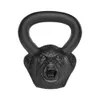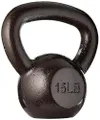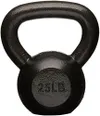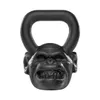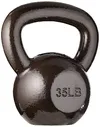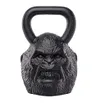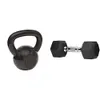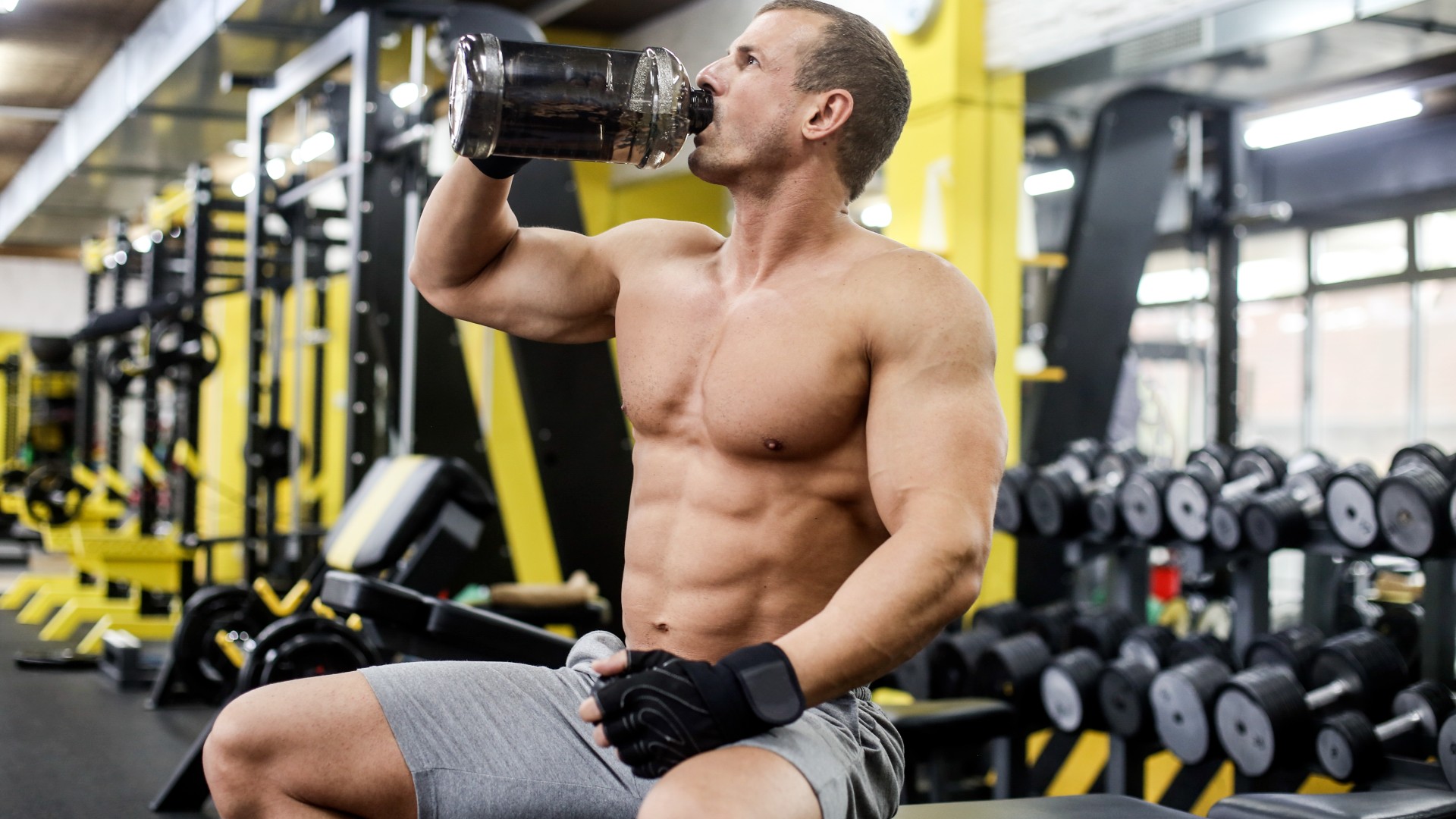
If your goal is to build muscle, it’s not just about lifting heavy weights like barbells, kettlebells, or dumbbells in the gym — your diet plays a vital role in giving your body the building blocks for muscle growth. We’re talking about protein, of course.
Protein is one of the key macronutrients your body needs to keep you strong and healthy. But you’re not alone if you’re unsure how much protein you need daily to grow and repair muscle. There’s no one magic number you can stamp on nutrition to guarantee muscle growth, so it’ll take some trial and error, but there are guidelines you can follow.
Below, we cover how much protein you need to grow muscle, the best ways to add protein to your diet and the benefits. Grab one of the best protein shakers to fuel your protein consumption, and read on.
What is protein?
Protein is one of three macronutrients you need to consume to stay healthy, alongside fats and carbohydrates, impacting everything from hormones, enzymes and neurotransmitters to bones, muscles and skin maintenance. It’s also a key player in building and maintaining muscle mass.
Formed of chains of amino acids (organic compounds), proteins are like building blocks for muscle growth — you need them to grow and maintain cells and tissues. Amino acids are categorized as essential or non-essential; the nine essential amino acids can’t be produced naturally by the body, so they must be sourced through diet.
Think of animal products like lean meat, tofu, eggs, fish, dairy products, beans, nuts, seeds, oats, soy and pulses. Vegan and vegetarian athletes should consider plant-based proteins that supply essential amino acids. According to the American Council on Exercise (ACE), plant-based complete proteins exist, yet many vegetables, grains and nuts are incomplete as they don't contain all the essential amino acids, so you’ll need to be as varied with your diet as possible.
Once consumed, the body digests protein and breaks it into amino acids, using this as a currency for performing various bodily functions.
Sign up to get the BEST of Tom's Guide direct to your inbox.
Get instant access to breaking news, the hottest reviews, great deals and helpful tips.
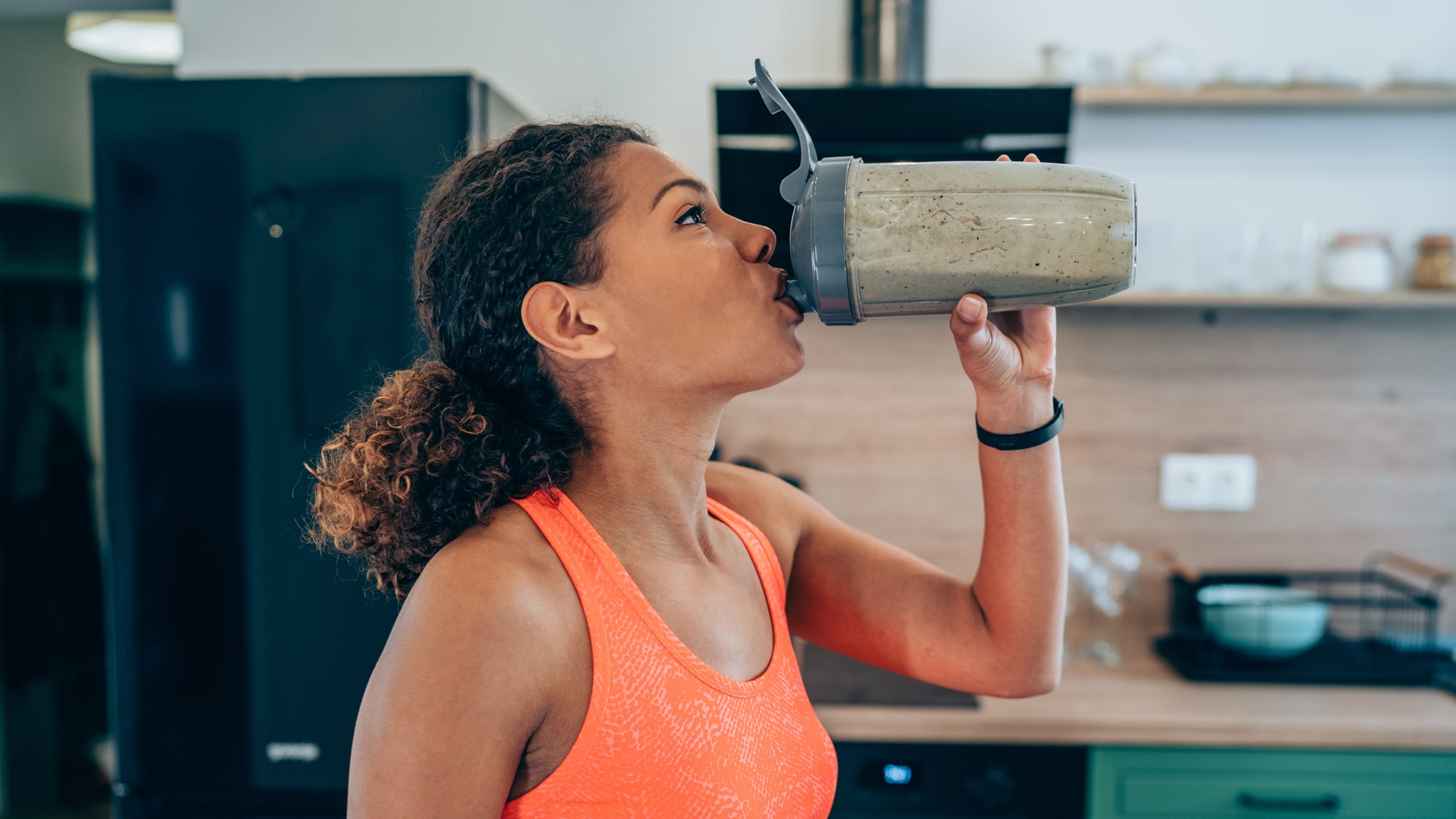
If you remember just one amino acid, let it be leucine, which initiates muscle synthesis, and can be found in high-quality protein sources and protein powders. Protein sources that include all nine essential amino acids are called complete proteins, so, where possible, always aim for high quality.
The supply and demand process of replacing amino acids — known as protein synthesis — is constant, so to grow and maintain muscle mass, you’ll need an adequate amount of daily protein in your diet. Everyone has different protein needs — if you exercise often and want to bulk up and build muscle in the gym, you’ll need more protein than a sedentary person, for example.
And because protein is key for muscle growth, and lean muscle mass is more metabolically active than fat, having a higher percentage of muscle is crucial for metabolic health. As you get older, muscle mass decreases (called muscle atrophy) and so does your metabolism, so consuming enough protein becomes even more important. The more you grow, the more you’ll need to maintain.
How much protein do I need to build muscle?
Protein requirements differ depending on factors like age, biological sex, activity levels, genetics, body composition goals, plus the calories you take in during the day.
For example, kids need less protein than adults, men typically need more protein than women and pregnant or breastfeeding women or those trying to build muscle will need more protein than those who aren't.
There’s a lot of misinformation out there. The current Recommended Dietary Allowance (RDA) is 0.8 grams of protein per kilogram of body weight (0.36 grams per pound) as a basic requirement to avoid deficiency, and the U.S Department of Agriculture recommends 10% to 35% of daily calories come from protein (1 gram of protein is 4 calories).
However, the American College of Sports Medicine recommends 1.2 to 1.7 grams per kilo of body weight for strength athletes and around 1.2 to 1.4 grams for endurance athletes.
How much protein should you eat?
As a trainer, I recommend most clients aim for 1 to 1.5 grams per kilo or up to 2 grams if trying to build muscle, and in a bulking phase. You can use an online protein calculator to estimate your recommended protein intake based on your individual metrics and activity levels; the average person will need around 20 to 30 grams of protein per meal, spaced out throughout the day.
Another popular method is a macro calculator, which uses biological metrics and activity levels to determine a recommended daily calorie, carb, fat and protein intake specific to you. If tracking isn’t your thing (here’s why I don’t recommend counting calories), cut the bull and estimate between 10 to 35% of your overall intake to form protein.
The quality of that protein also matters if you want to guarantee getting all the essential amino acids and feeling sated, so where possible, strive for natural sources of protein, only supplementing with protein powders or shakes if you can’t top up levels through your diet.
Here’s the catch: you’ll need a slight calorie surplus to build muscle. That means consuming around 200-300 calories more than you’re burning during the day.. For example, increasing from a 2,000 calorie diet to a 2,300 intake. Again, use the guidelines above to estimate protein, then balance the remaining amount with complex carbs, plenty of veggies and healthy fats.
What is the best time to eat protein?
Some research has shown high protein diets could improve weight loss by increasing food satiety (how full you feel), so try to spread protein across every meal.
There’s a misconception that protein should always be consumed post-workout, but some interesting studies have shown that consuming protein before a workout could increase protein synthesis. We recommend consuming protein 60 to 90 minutes pre-workout or 30 to 60 minutes post, and spreading meals out accordingly.
We cover the specifics on eating before or after a workout, what to eat before a workout according to a sports nutritionist, and the best time to drink a protein shake if you're unsure where to start or need some dietary ideas.
But if you supplement with protein powders and shakes, these aren’t regulated by the U.S. Food and Drug Administration (FDA), so avoid using them as the bulk of your dietary protein intake. Vegetarians and vegans might find them helpful when topping up protein levels, but there are still plenty of natural sources to turn to, and a nutritionist, dietician, or qualified personal trainer might be able to guide you more closely.
Bottom line
Your workouts matter, as does recovery, sleep and overall wellbeing — body recomposition, weight loss, or muscle growth should be approached holistically, looking at all aspects of your physiological and psychological health.
During training, you’re applying stress to your muscles, essentially causing them to break down or microtear, and your diet and recovery help you rebuild and repair.
Your body needs balanced protein, carbs and fats to function optimally. If your goal is muscle gain, balance regular resistance training, progressive overload during exercise and adequate protein intake, alongside plenty of fresh vegetables, healthy fats and whole grains.
If you choose supplementation, aim for a high-quality protein powder with at least 20 grams of protein per serve and “clean” ingredients that don’t contain sweeteners or thickening agents. If you can’t say it, don’t consume it.
For weight loss, consume slightly fewer calories than you burn, which is known as a calorie deficit; this should be slight and maintainable, and we recommend keeping your protein intake similar to preserve lean muscle mass.
More from Tom's Guide
- I took creatine every day for 12 days like Mark Wahlberg, and here's what happened
- I drank apple cider vinegar every day for 10 days like Victoria Beckham, and here's what happened
- Hypertrophy vs strength training: which is better for building muscle?

Sam Hopes is a level 3 qualified trainer, level 2 reiki practitioner and senior fitness writer at Tom's Guide. She is also currently undertaking her Yoga For Athletes training course. Sam has written for various fitness brands and websites over the years and has experience across brands at Future such as Live Science, Fit&Well, Coach, and T3.
Having worked with fitness studios like F45 and Virgin Active, Sam now primarily teaches outdoor bootcamps, bodyweight, calisthenics and kettlebells. She also coaches mobility and stretching-focused classes several times a week and believes that true strength comes from a holistic approach to training your body.
Sam has completed two mixed doubles Hyrox competitions in London and the Netherlands and finished her first doubles attempt in 1:11.

